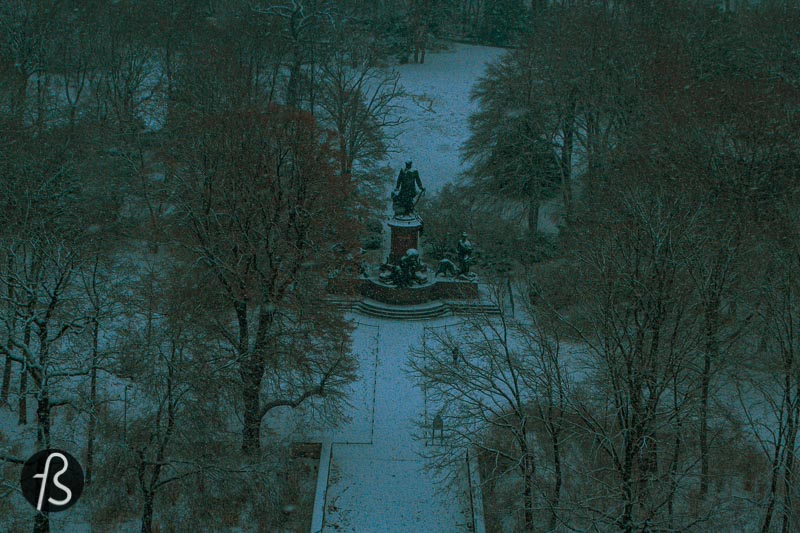Crowned with a golden statue above it, the Berlin Victory Column is one of the city must-see sights and destinations.
And it also has one of our favorite panoramic views of Berlin!
From the Brandenburger Tor, you can see it shining in the middle of the Tiergarten, high above the trees on Straße des 17. Juni. And we have been visiting the column every year since 2016, so we could capture the city in different seasons, and you can see it in the pictures we are sharing here.
Our first time climbing all the way to the top of the Victory Column was back in the Fall of 2017, and we couldn’t believe why it took us so long to get all the way there. After the first visit, we were there, at least once, each season. And at the end of 2020, we managed to finally capture the Tiergarten covered in snow from the Victory Column. We knew it was time to finally write an article about it with that in mind.
We believe that the first time we ever saw the Victory Column was back in the early 1990s when the video from U2’s Stay (Faraway, So Close!) used to play on Brazilian MTV. If it wasn’t that, it was probably on Wim Wenders’ Wings of Desire that we watched somewhere growing up.
So, when we first came to Berlin, we visited the column, and it felt surreal in a way. Like being able to see something with our own eyes for the first time. Something that was always so distant inside a TV. This is our relationship with the Victory Column, but there is much more.
The Berlin Victory Column in the middle of Tiergarten
A bit of the history behind the Victory Column
In German, the Berlin Victory Column is called Siegessäule—Sieg from victory and Säule from the column. And we will call it Victory Column because it makes more sense to us.
The history of the Berlin Victory Column began in 1864 when the Prussian King Wilhelm I suggested that a memorial be erected in Berlin to commemorate the victory of the German-Danish War. The court architect Heinrich Strack was put in charge of those memorials.
The Düppel and Arnkiel memorial was the first to be built close to where the war occurred. Both were destroyed after the end of the Second World War and the German occupation of Denmark. But, after the cession of North Schleswig in 1920, the monument has been in Denmark. However, don’t think that you can see these memorials today.
Back to the Victory Column in Berlin. During the design process, Prussia was victorious in two more wars—one against Austria in 1866 and the Franco-Prussian War that ended in 1871.
These victories were brought into the design and became three of the four segments you can see today.
On Sedan Day, the Victory Column was unveiled in September 1873. If you never heard of Sedan Day or Sedantag in German, this was a day of remembrance celebrated annually to mark the surrender of the French army in the Franco-Prussian War. It was a national holiday during the days of the German Empire.
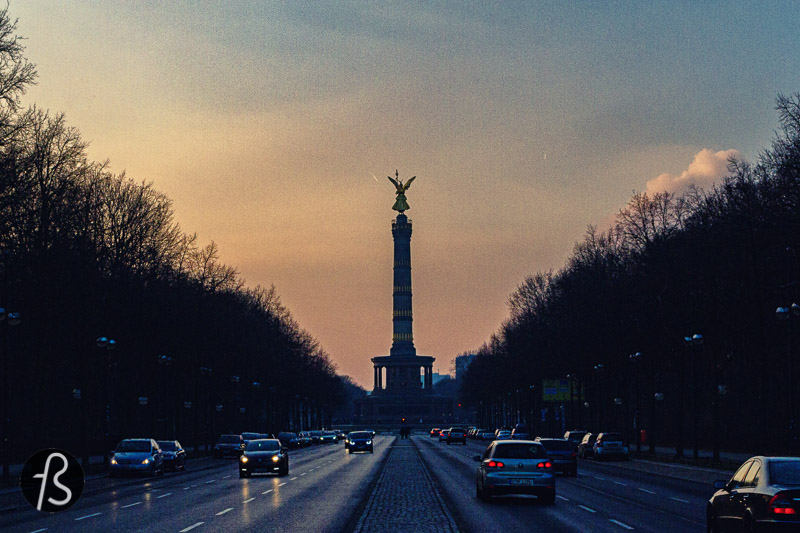

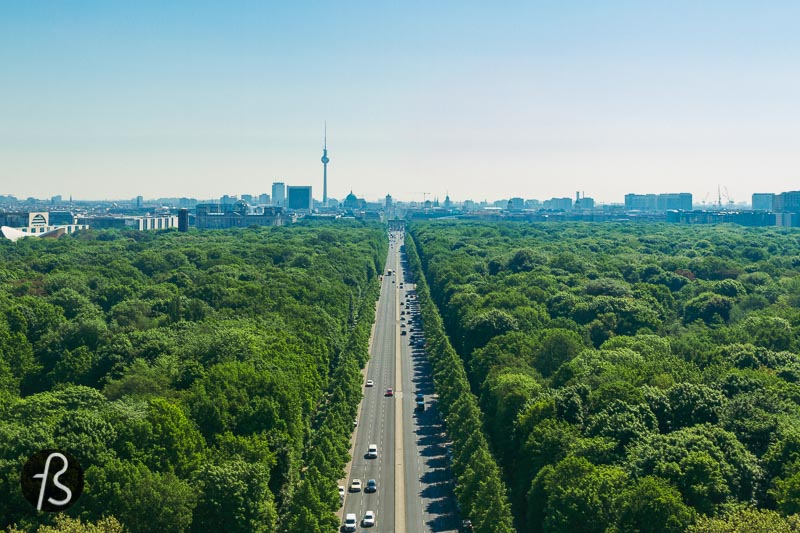

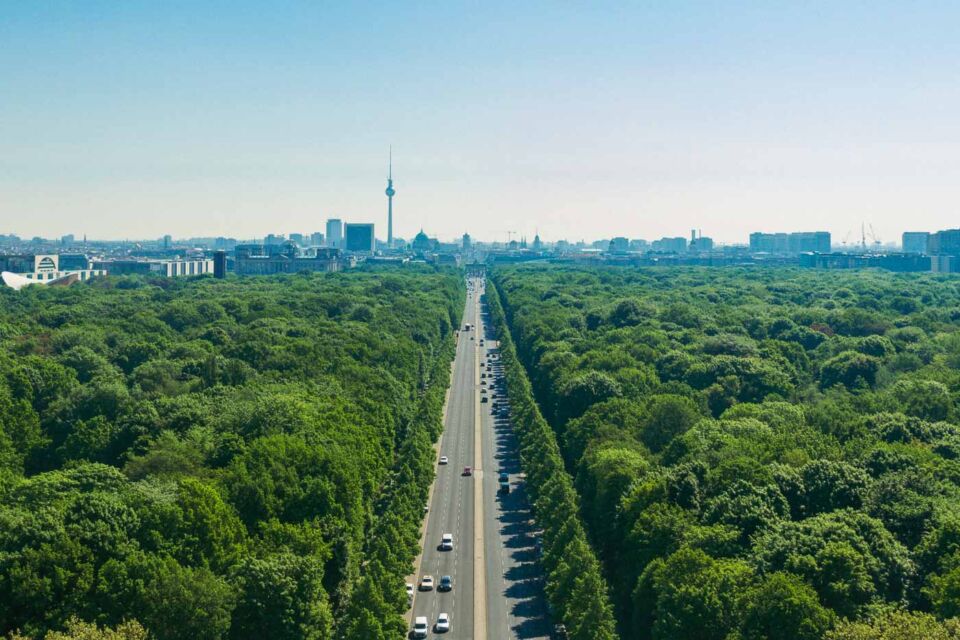
The Siegessäule
But we are going to talk more about it later. The base of the Victory Column is made of a beautiful polished red granite that still carries the scars of the Second World War, and you can easily spot them even today. Above the red granite, column stands 60 meters tall with 4 segments: three for the Prussian wars mentioned before and a fourth one added when the monument changed places in 1939. A spiral staircase with 285 steps leads to a platform 50 meters high above the Tiergarten inside these segments.
When you are walking up the stairs, the first stop you have is on the base of the Victory Column. You will see a glass mosaic that covers the entire wall area. It was designed by Anton von Werner and built by Antonio Salviati‘s company in 1876. It portrays an image that Wilhelm I wanted to show the world: the unification of Germany as an Empire after the victory over France.
This theme also appears on the bronze reliefs that appear at the base of the Victory Column. There is a relief on each of the four sides of the red granite base. One of them shows a scene of the war against Denmark. Another portrays the Battle of Königgrätz against Austria. The other, the Battle of Sedan and the conquest of Paris. The fourth and last side shows the troops entering Berlin.
At France’s request, these reliefs were removed from the Victory Column after the Second World War. One of the reliefs was kept in the Spandau Citadel. The others were taken to Paris and presented at the Musée de l’Armée. It was only in 1987, for the celebration of Berlin’s 750th anniversary, that they were returned and reinstalled. But, some of them didn’t survive the war very well and can only be seen in fragments today.
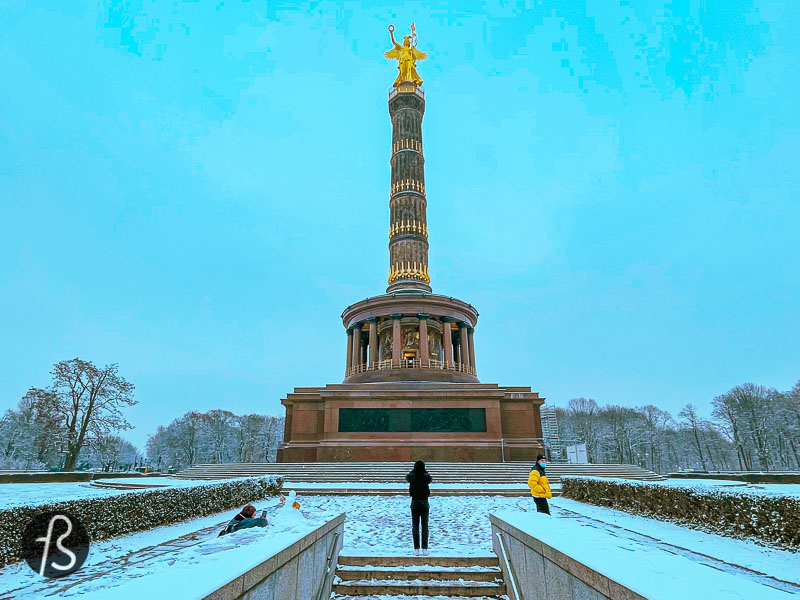
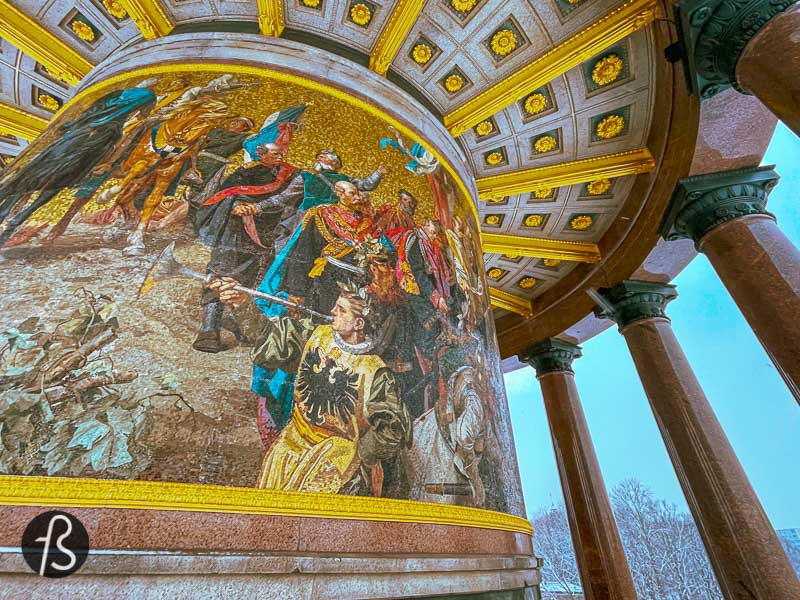
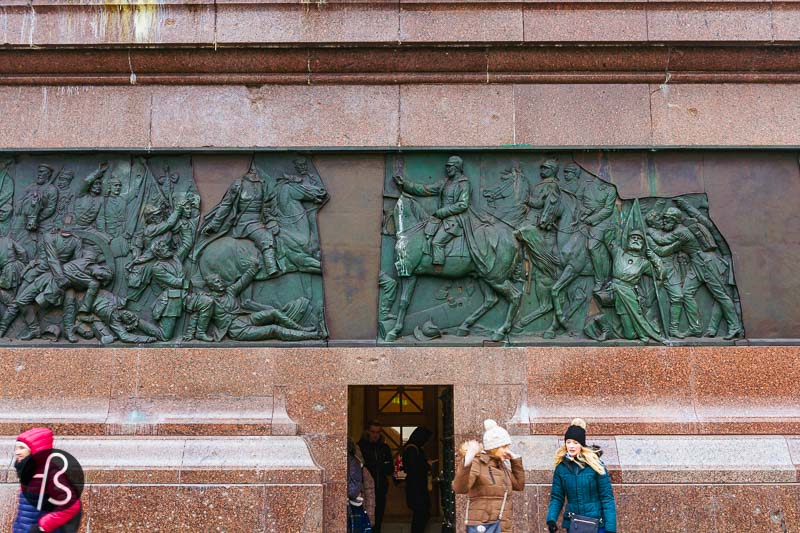
Borussia, the Crowning Statue
High above the Victory Column, you can find a bronze sculpture of a female form. For some, she might look recognizable as a goddess of ancient mythologies. In Greek mythology, she would be called Nike; in Roman, she was Victoria. Here, since she appears with an eagle helmet, she is Borussia, the personification of Prussia.
The statue was designed by Friedrich Drake. It looks similar to Victoria of Great Britain and Ireland, who was the Crown Princess of Prussia at the time. The bronze figure is taller than 8 meters and weighs 35 tons.
When the Victory Column was still placed on Königsplatz, the statue faced Siegesallee. This was a boulevard that crossed the Tiergarten, and it was populated with sculptures from the Prussian and Brandenburg royalty. Today the statue faces west, towards Ernst-Reuter-Platz.

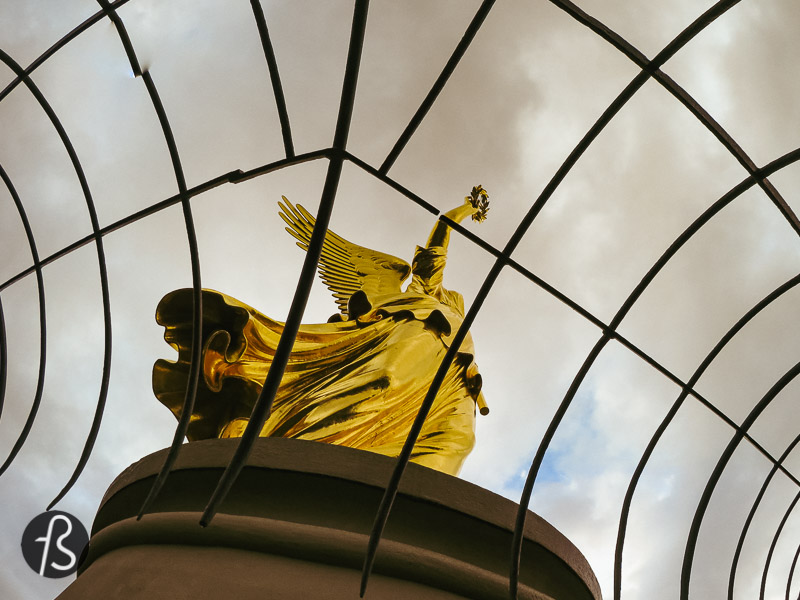

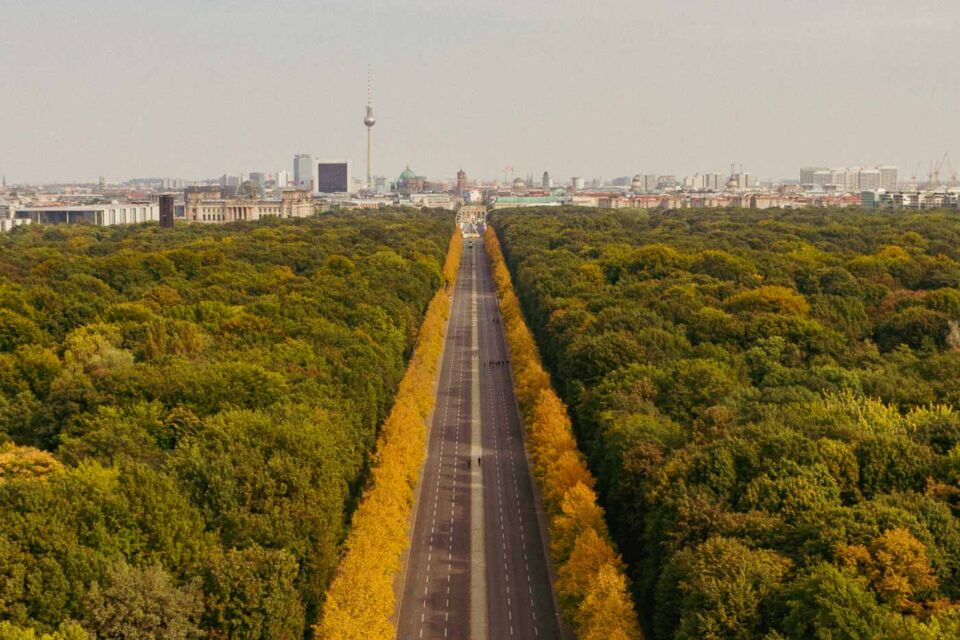
Its previous location and Germania
When the Victory Column was built on Königsplatz, the area was surrounded by the Generalstabsgebäude, where anything related to the administration of the German Empire was dealt with, and the Kroll Opera House that was torn down for the construction of the Reichstag in the 1880s. In 1895, Wilhelm II ordered the construction of the Siegesallee, and that is how the area looked like for almost forty years.
After the Nazis took power in the 1930s, one of their plans was the construction of Welthauptstadt Germania, a monumental renewal of Berlin as a vision of the future after the planned victory in the Second World War. Because of these megalomaniacal plans, the Victory Column was moved from Königsplatz, where the Platz der Republik can be found, to the Großer Stern.
The goal here was the reinforce the east-west axis that Albert Speer, the General Building Inspector for the Reich Capital, had in mind for Welthauptstadt Germania. The base was widened, and it became the Victory Column that we recognize today. Another segment was added to it to make the column more epic, and the monument reached 67 meters in height.
The designs done by Albert Speer can still be seen today in the building that leads to the tunnel under the street. This was part of the new Großer Stern, a forum for the Second Reich, together with monuments to Bismarck, Moltke, and Roon. You can see all of this today.

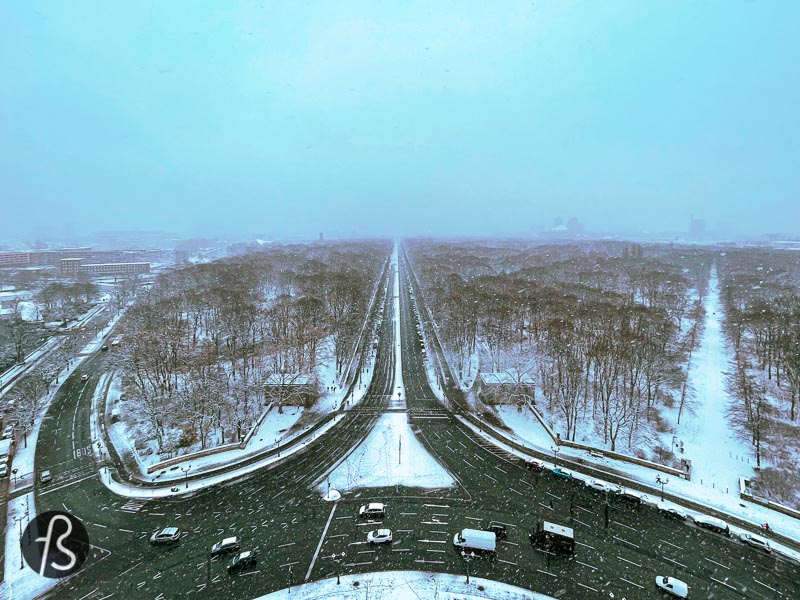
The Berlin Victory Column after the Second World War
It’s crazy for us to think about the fact that the Victory Column survived the Second World War largely undamaged. But that is the truth. However, it seems like this happened almost by accident. On May 2nd, 1945, Polish soldiers managed to climb to the top and raise a Polish flag from the Victory Column. But they didn’t know the monument’s importance and regretted not blowing it up.
According to the Allied Control Council that decided on preserving or removing militaristic monuments, the Victory Column should stand since it predated the First World War. The Soviet Forces tried to demolish it in August 1946. An election and some bureaucracy stood in the way of its destruction for the time.
But, in November 1946, the French forces requested the Allied Command in Occupied Germany to demolish the Victory Column. A vote would decide the fate of the column and, this time, the Soviet Forces didn’t choose the demolition and abstained from voting. British and American forces rejected the proposal. This was when the bronze reliefs representing the Franco-Prussian War were removed and taken to Paris.
During the Berlin Wall years, the Victory Column stood in West Berlin, but we are not sure if you could climb all the way to the top and stand on the viewing platform.
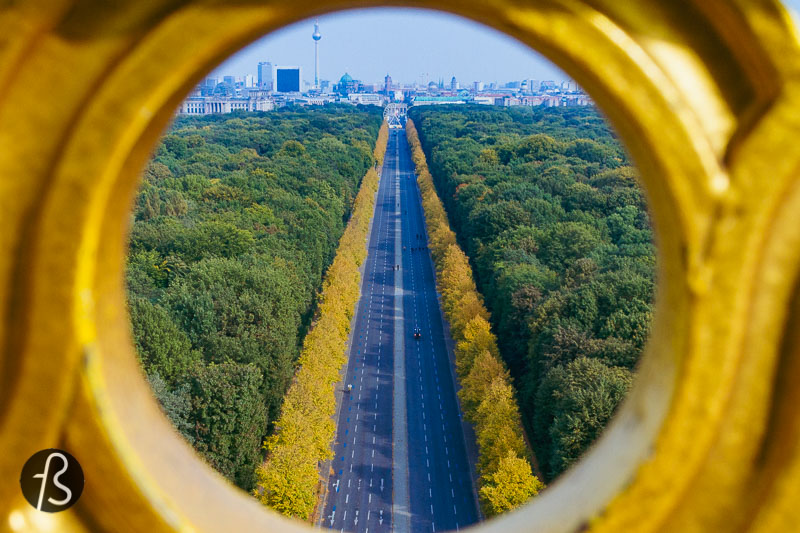
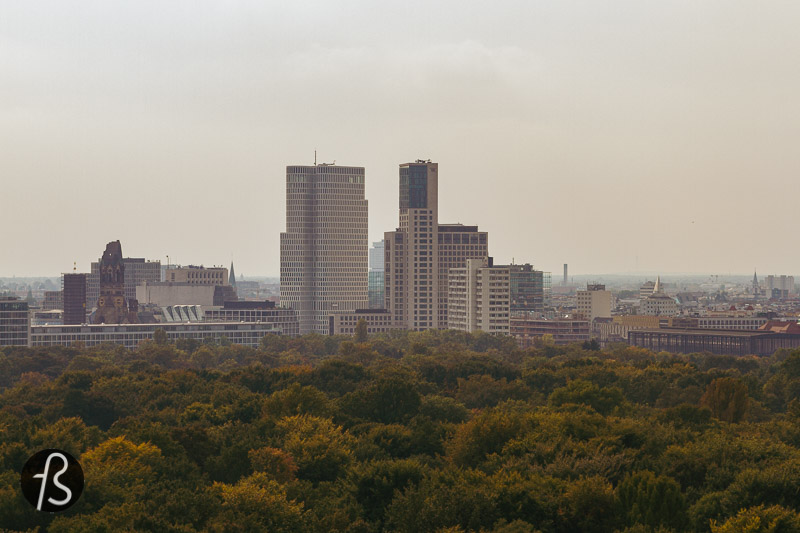
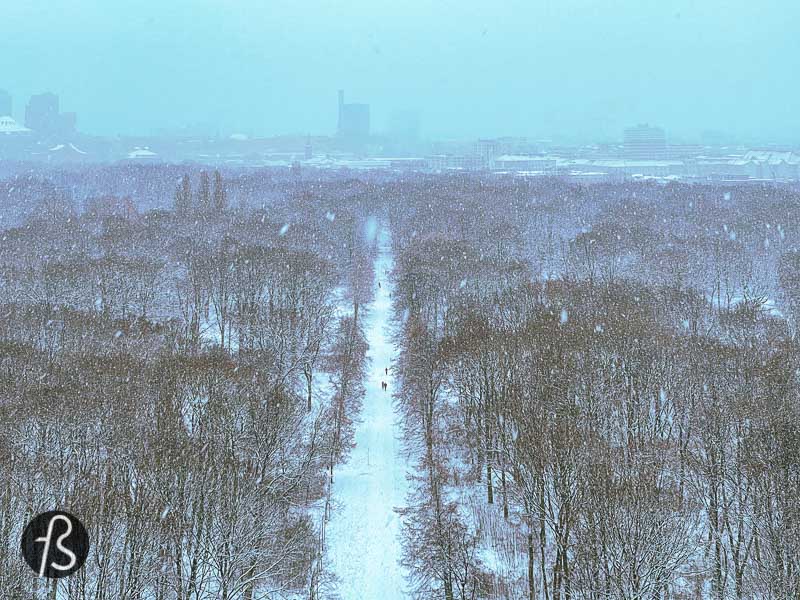

The Victory Column today
After the fall of the Berlin Wall, the Victory Column became the focus of significant events in Berlin. When the Love Parade was held in Berlin, the column was the central meeting point for people. But some parts of its history are bleaker.
In January 1991, the Revolutionary Cells, a German far-left militant organization, carried out a bomb attack on the Victory Column with an explosive device that weighed 2 kilos. No one was injured, but the observation deck was closed to visitors for almost one year.
In July 2008, when Barack Obama was still running the presidential election campaign in the United States, he gave a speech in front of more than two hundred thousand people.
For us, the Victory Column is one of the symbols of Berlin and a place that everyone that visits the city has to go. The view from the observation deck is gorgeous, and you can spot how fantastic this city really is. If you can, do like we did and document the changing seasons from it, and you won’t regret it.
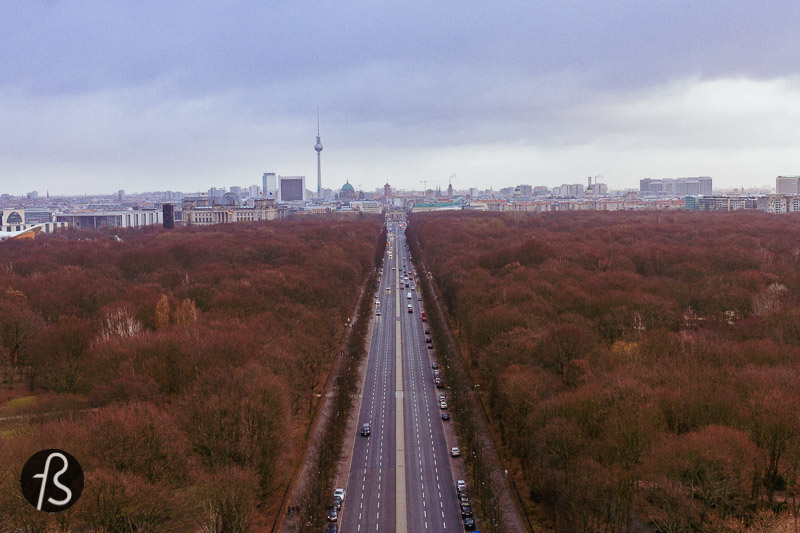
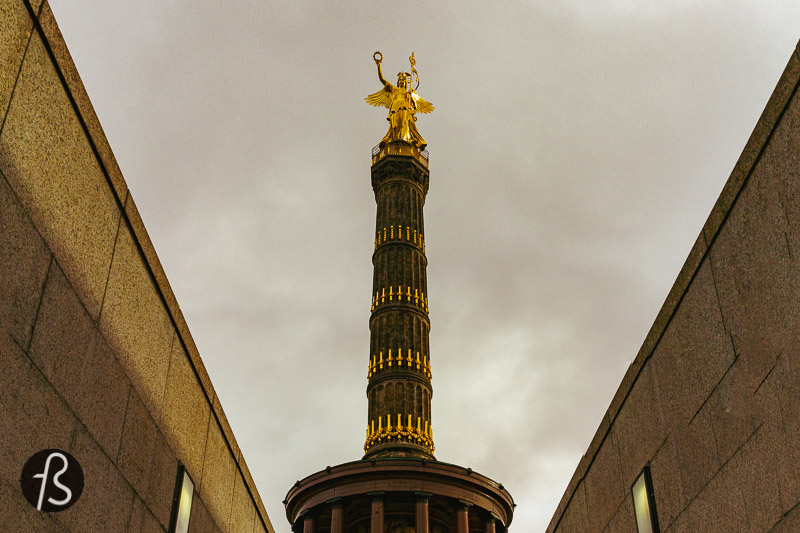
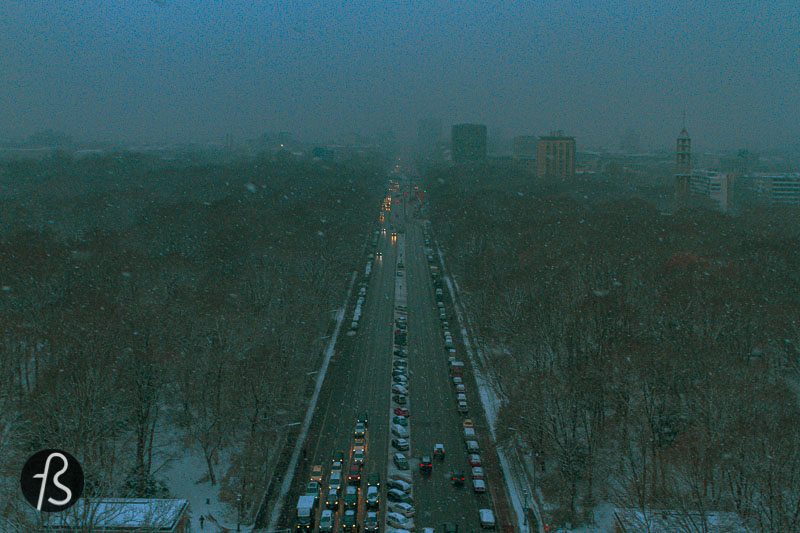
Visiting the Victory Column
It’s easy to visit the Victory Column in Berlin. It costs 3 euros to go up there, and it’s more than worth climbing the 51 meters to the top. The viewing platform can be visited every day of the week but the opening time changes depending on the season.
More information about prices and opening hours can be found here.
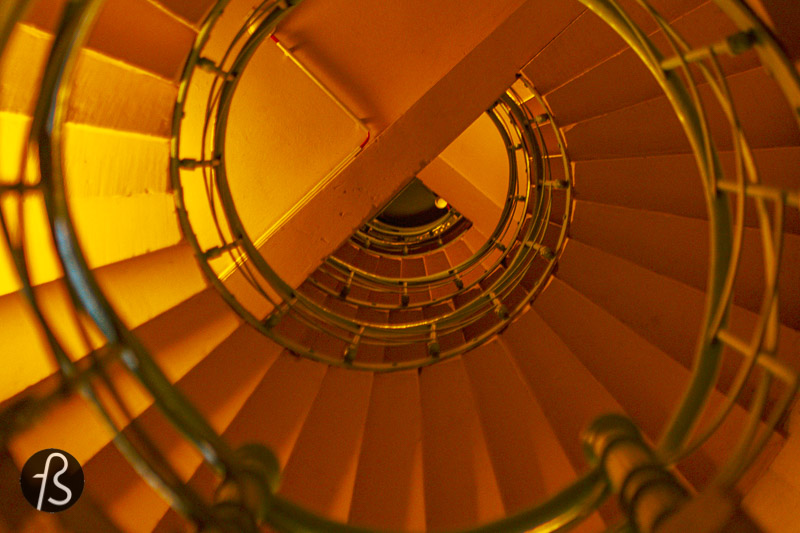
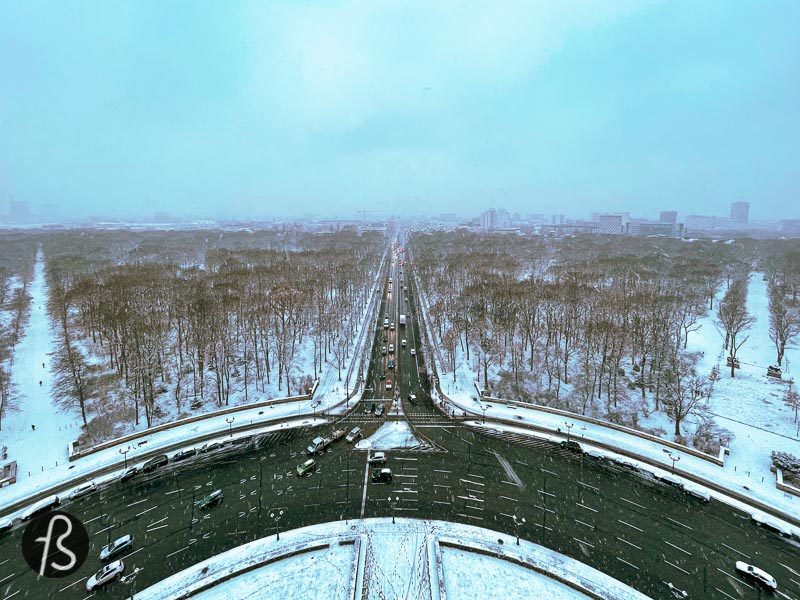

Siegessäule: The Berlin Victory Column in the middle of Tiergarten
Grosser Stern 1
10785 Berlin
